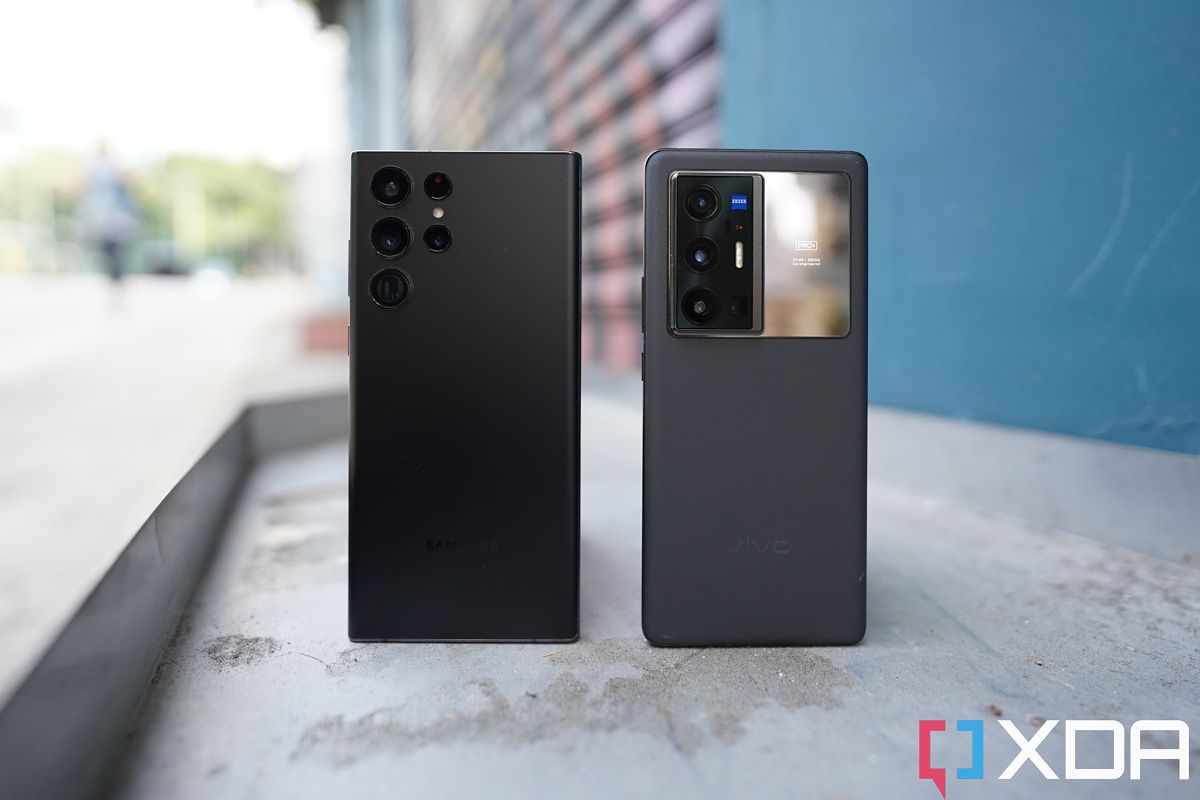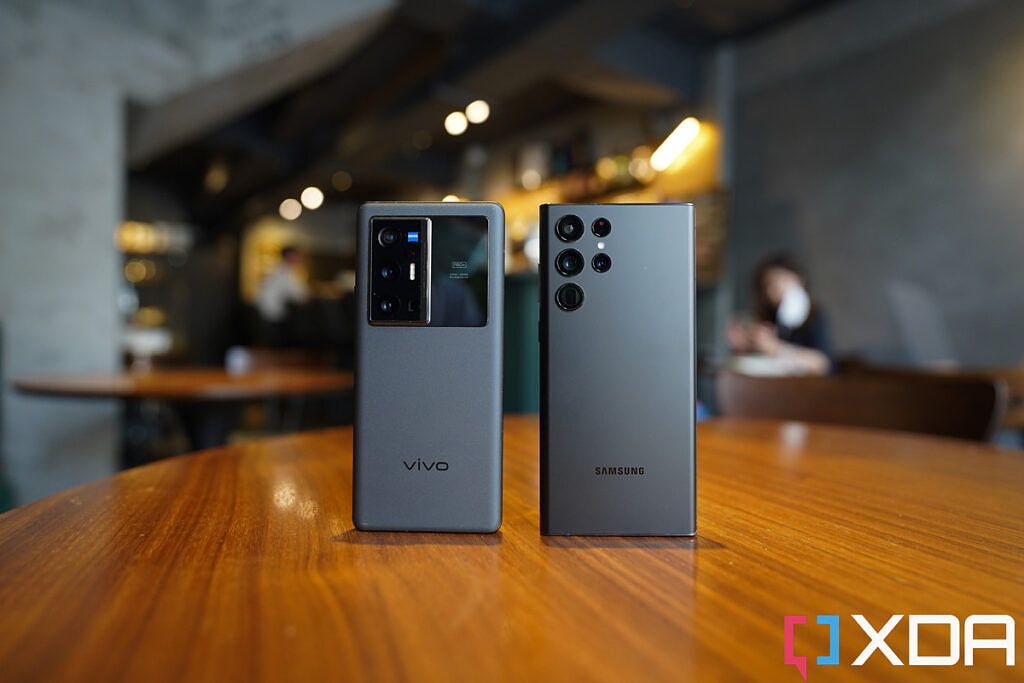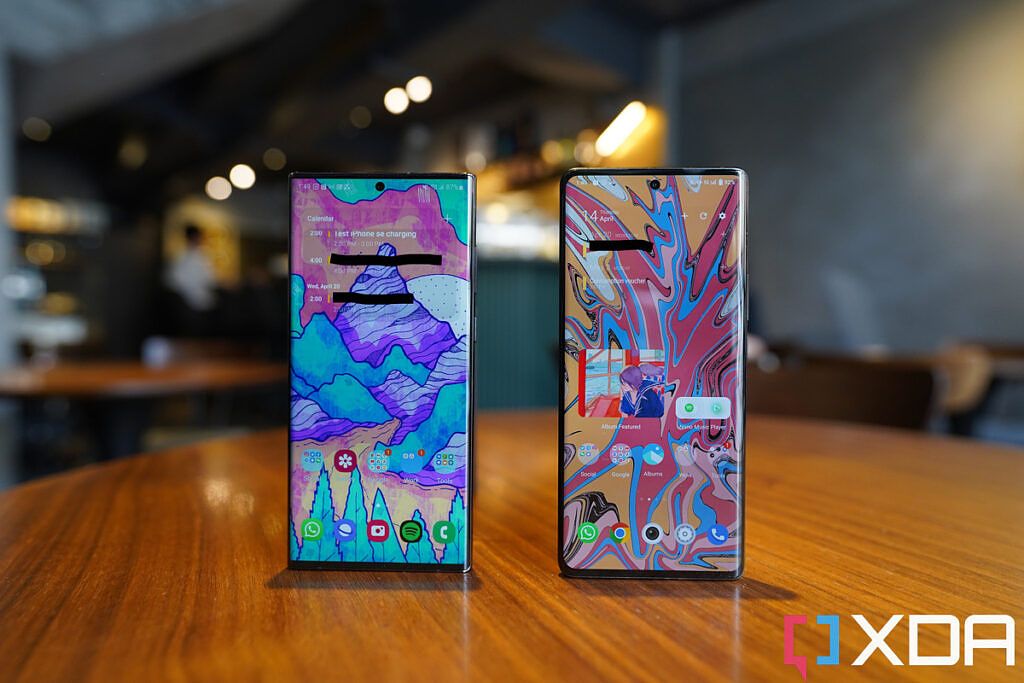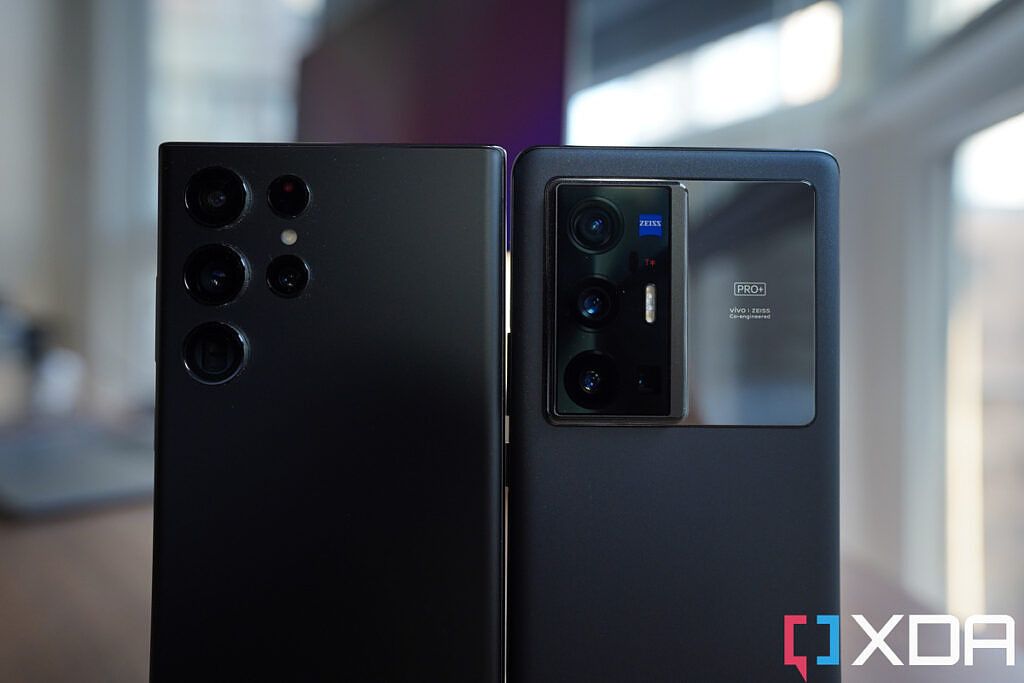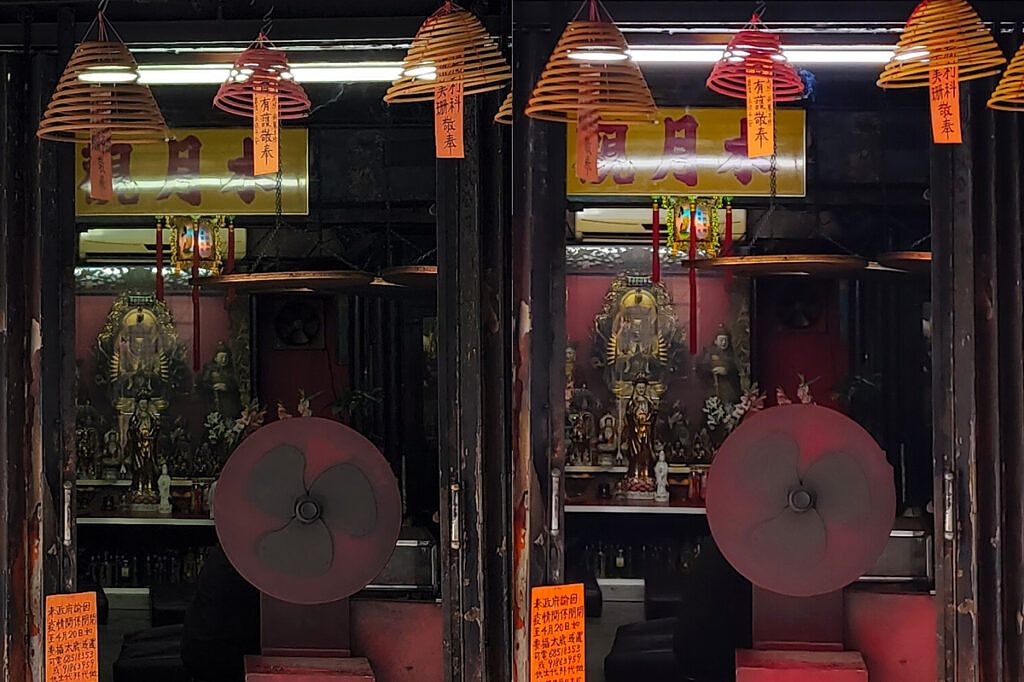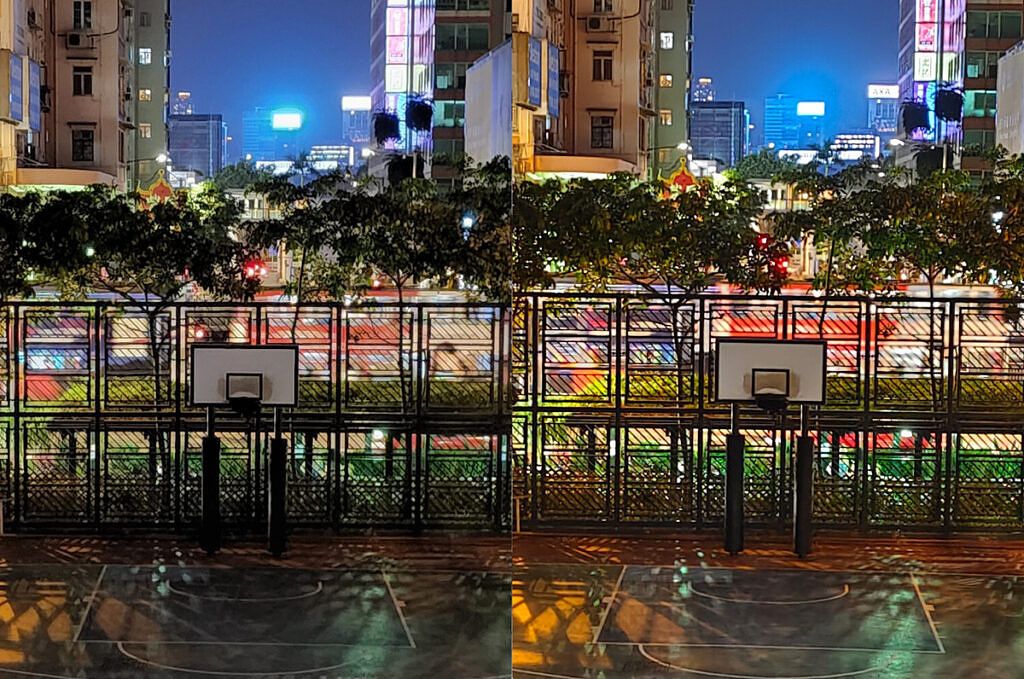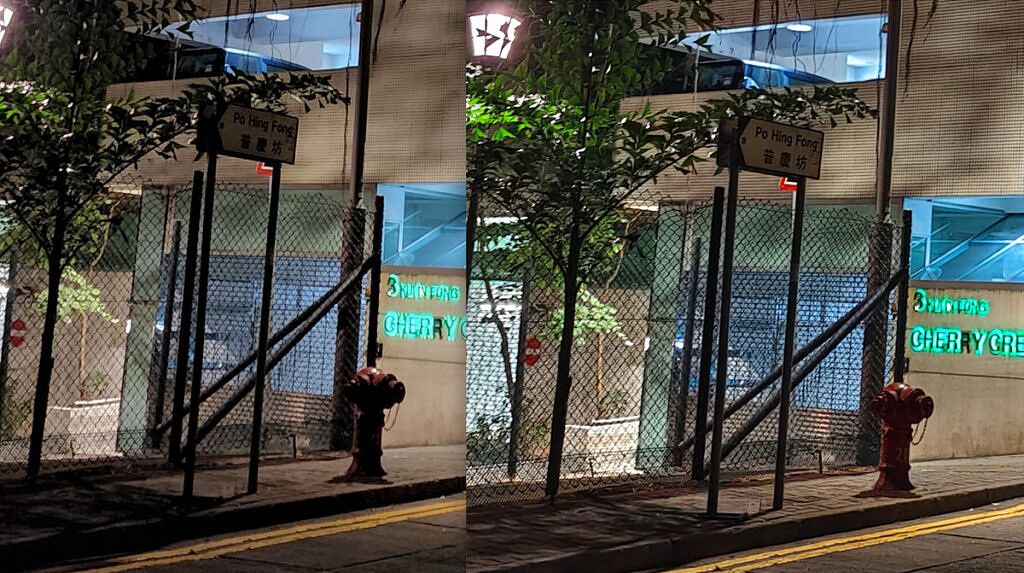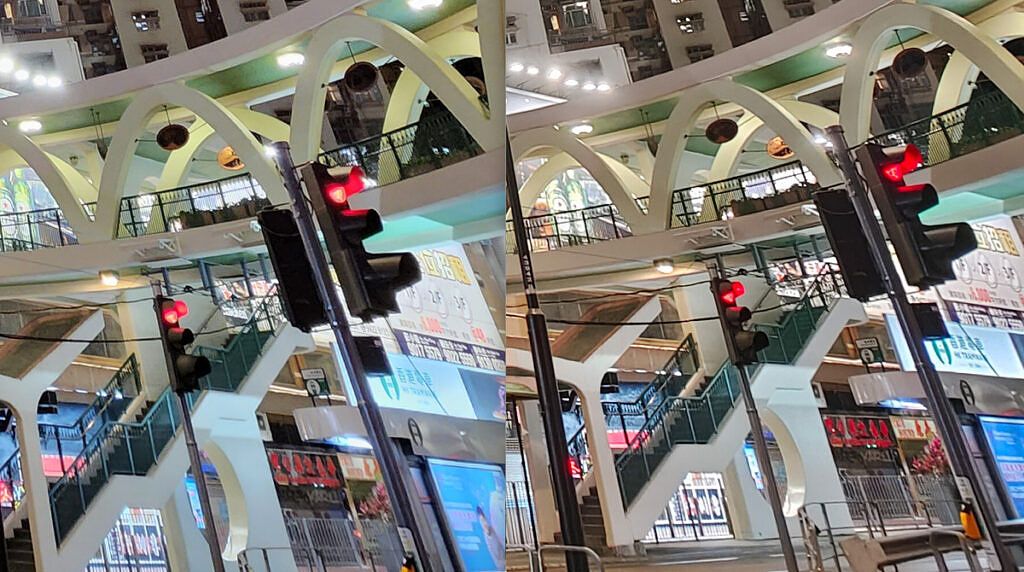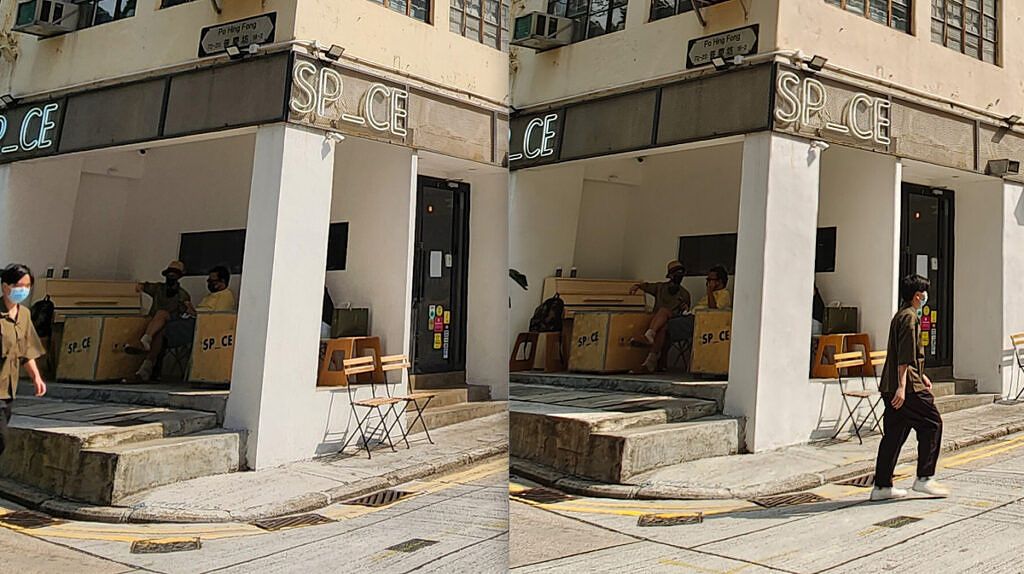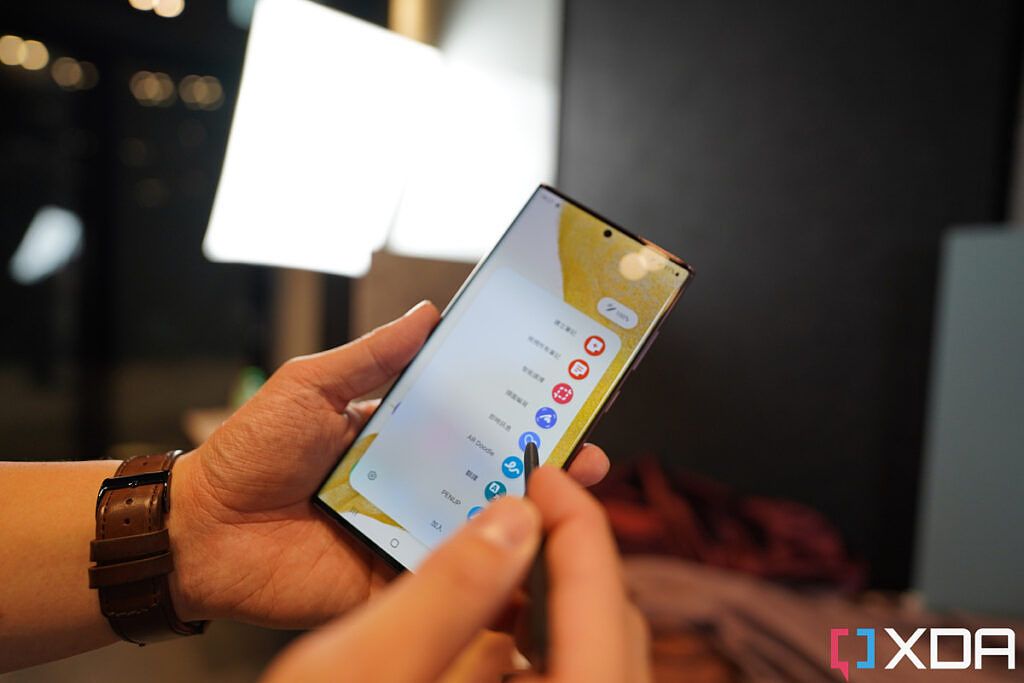We here at XDA usually would not bother dedicating an entire versus piece comparing a 2022 flagship that's widely available (Samsung's Galaxy S22 Ultra) against a 2021 flagship that's available only in select parts of the world (Vivo's X70 Pro Plus). But the X70 Pro Plus was no ordinary phone -- it was, at least in my opinion after heavy testing and comparisons, the best smartphone camera of 2021. And since Samsung's Galaxy S22 Ultra has serious camera chops of its own, it is worth comparing the two camera systems. Is the Vivo X70 Pro Plus still the camera king, or has it finally been dethroned by the Galaxy S22 Ultra?
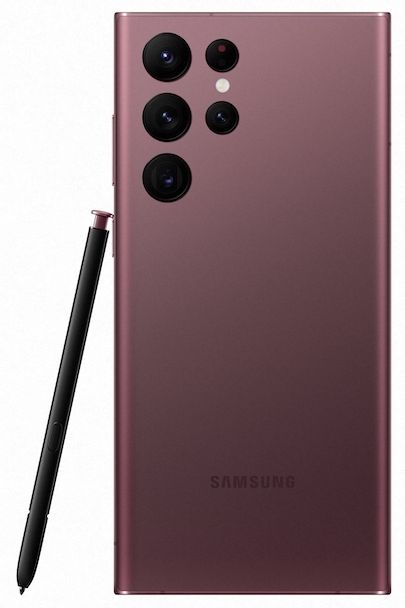
Samsung Galaxy S22 Ultra
The Samsung Galaxy S22 Ultra is the alpha dog Android phone at the moment, offering the most of everything.
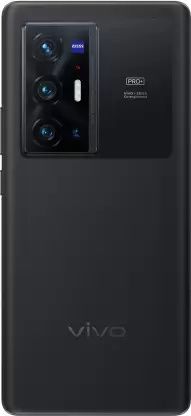
Vivo X70 Pro Plus
The Vivo X70 Pro Plus is a good looking flagship with a very capable main camera.
Samsung Galaxy S22 Ultra vs Vivo X70 Pro Plus: Specifications
|
Specifications |
Vivo X70 Pro Plus |
Samsung Galaxy S22 Ultra |
|---|---|---|
|
Build |
|
|
|
Dimensions & Weight |
|
|
|
Display |
|
|
|
SoC |
Qualcomm Snapdragon 888+ |
|
|
RAM & Storage |
|
|
|
Battery & Charging |
|
|
|
Security |
Optical in-display fingerprint reader |
Ultrasonic in-Display fingerprint scanner |
|
Rear Camera(s) |
|
|
|
Front Camera(s) |
32MP |
40MP |
|
Port(s) |
USB-C |
USB-C |
|
Audio |
Stereo speakers |
Stereo speakers |
|
Connectivity |
|
|
|
Software |
FunTouch OS 12 over Android 12 |
One UI 3.1 over Android 12 |
|
Other Features |
Dual physical SIM |
Single physical SIM in Korea and US; dual physical SIM in most other regions |
About this article: This comparison was written after months of testing a Samsung Galaxy S22 Ultra provided by Samsung Hong Kong and a Vivo X70 Pro Plus provided by Vivo Global. Neither Samsung nor Vivo had any input in this article.
Samsung Galaxy S22 Ultra vs Vivo X70 Pro Plus: Design and Hardware
With screens measuring 6.8-inches and 6.78-inches respectively, the Galaxy S22 Ultra and Vivo X70 Pro Plus are both big phones. But the former feels more unwieldy because it's a bit wider, heavier, and has pointy corners.
Both phones do some unusual things with camera placement — the Galaxy S22 Ultra doesn’t have a camera island at all, with the lenses simply protruding from the back of the phone. The X70 Pro Plus, meanwhile, goes the other route and features a gigantic camera module that stretches nearly the entire width of the phone, despite cameras being placed on one side — with the other half being this reflective plate that does nothing other than add some cosmetic appeal.
Both the devices are the typical glass-and-aluminum sandwich slab, although the Vivo X70 Pro Plus also comes in a version with a leather-textured back. I am not a fan of the material Vivo has chosen with its glass back here — it’s this frosted finish that feels slippery to my hand; I much rather the Galaxy S22 Ultra’s matte coating.
Since the X70 Pro Plus is technically a last-gen (2021) phone, it uses older components compared to the Galaxy S22 Ultra: the Vivo device is powered by a Snapdragon 888 Plus instead of the Snapdragon 8 Gen 1 used in my model of the Galaxy S22 Ultra (some variants of the Galaxy S22 Ultra run on Exynos 2200), and the X70 Pro Plus’ display panel is a first-gen LTPO panel compared to Samsung’s LTPO 2.0 panel, which means the Galaxy S22 Ultra’s screen can cycle between a wider range of refresh rates.
And while both displays are WQHD resolution, the Galaxy S22 Ultra screen gets brighter. In the below product shot, I had to lower the Galaxy S22 Ultra's brightness to around 25% just to match the similar brightness of the X70 Pro Plus at 50%.
The usual flagship flourishes can be found across both devices, including IP water resistance rating, wireless charging, stereo speakers, excellent haptics, and the latest standards of RAM and storage. But the Galaxy S22 Ultra has a significantly larger 5,000 mAh battery than the X70 Pro Plus’ 4,500 mAh cell, plus it has a stylus (S-Pen) built into the phone. Vivo, meanwhile, offers an extra chip dedicated to handling image processing (Samsung just relies on either the Snapdragon/Exynos chip to do so). Let’s dive into camera comparisons because photography is the strongest area of either phone.
Samsung Galaxy S22 Ultra vs Vivo X70 Pro Plus: Cameras
A curious thing happened in the last couple of years when it comes to Android smartphone cameras: as Samsung beefed up its camera hardware with more lenses and gaudier specs, most Chinese brands have taken a step back, almost like they're trying not to match Samsung's Ultra phones lens for lens, spec for spec. For example, OPPO and Huawei co-pioneered the Periscope zoom lens technology in 2019, a full year before Samsung offered one, and Huawei was the first to reach the 10x optical zoom range, more than half a year before the Galaxy S21 Ultra did the same. But in the last couple of years, OPPO has stopped using Periscope zoom tech entirely, and Huawei's most recent flagship had only a 3x Periscope zoom. As for the idea of using two zoom lenses for better focal length versatility? Xiaomi did that first with 2020's Mi 10 Pro but somehow hasn't tried the same idea since.
Vivo's X70 Pro Plus seems to be the only exception. It is the only non-Samsung Ultra phone in the last two years to bring a quad-camera system with two zoom lenses, and it has a lot of overkill features -- a gimbal camera system, Zeiss T-coating lenses -- that feels like it's designed to be as overkill in the camera department as Samsung's Ultra devices.
Both of these main camera systems offer four focal lengths: ultra-wide, wide (aka the main camera), telephoto, and a longer zoom. And both phones do a great job of keeping colors consistent across all four lenses.
Despite Vivo's phone offering two zoom lenses, they're curiously only a 2x telephoto and 5x Periscope, which means they don't quite offer the range of the Galaxy S22 Ultra's 3x telephoto and 10x Periscope. I'll evaluate the zoom lenses further down the article, so let's talk about the main (wide) camera first.
Main Camera
During good lighting conditions, both the Galaxy S22 Ultra and Vivo X70 Pro Plus have absolutely awesome main cameras. Both use pixel binning technology (Samsung does 9-in-1, Vivo does 4-in-1) to output a 12MP image. Vivo's slightly larger 1/1.31-inch sensor plus having fewer megapixels (50MP) mean there's more light information for each pixel compared to Samsung's 1/1.33-inch, 108MP sensor.
These lenses are fast to focus, have responsive shutters, produce natural shallow depth-of-field thanks to large sensors, and handle contrast very well thanks to smart HDR. The days of worrying about backlight are gone -- just point and shoot and the shot will mostly work. Examining the below samples, we can see a few key traits that will continue to be present throughout the rest of the comparison:
- The Galaxy S22 Ultra main camera produces cooler colors, the X70 Pro Plus tends to punch up reds and orange for a more saturated look.
- Photos from the X70 Pro Plus' main camera are brighter due to having fewer pixels. This can be a good or bad thing depending on the scene.
- Vivo seems to use software to further boost the appearance of bokeh when there are objects in the foreground.
- If we pixel peep at 100% scale, Vivo's shots are slightly more detailed.
The below sets of 100% crops show the X70 Pro Plus' more exaggerated colors, and Samsung's digital sharpening.
I'm nitpicking here, as for the most part, daytime photos are neck and neck, and "which photo looks better" comes down to personal preference. But once we move to low light situations, then Vivo's insane HDR that allowed it to beat every 2021 smartphone camera (at least in my testing) starts shining.
Looking at the below moderate low light samples, we can see, again, Vivo's shots are consistently brighter (check out the basketball courts), but despite that, Samsung's images are still the ones that are prone to blowing out lights (look at the "window and alley" sign in the second set, and the neon lights in the fourth set.
And if we pixel peep, the Galaxy S22 Ultra's shots are softer on details and exhibit more noise.
Once we move to low light scenes, Vivo's insane HDR that allowed it to beat every 2021 smartphone camera starts shining
In fact, the X70 Pro Plus' HDR is so freaking good at finding proper balance, that it sometimes makes a shot look unnatural as if it's photoshopped. Look at the first two sets of samples below, the colors of the giant screen in the first set, and the NFT light in the second set, are so perfectly balanced in Vivo's images that they look like they may be photoshopped. Samsung's images, by comparison, show the lights the way our eyes may perceive them -- a bit blown out because they're bright lights in a dark space.
Moving to a really dark scene, you really see the difference in light intake between the two cameras.
In the above photos of my gimbal and camera, look at how the X70 Pro Plus properly exposes the lamp, while keeping the camera and gimbal illuminated. The Galaxy S22 Ultra's shot blows out the lamp, while the camera and gimbal are drenched in shadows. And below are 100% crops of the first low light sample.
This may ultimately just be personal preferences, but the X70 Pro Plus' HDR continues to blow me away, the way it produces uncannily well-balanced and illuminated shots in every condition. For others, they may find the results too processed, too unnatural.
Ultra-Wide Camera
The Galaxy S22 Ultra uses a 12MP, f/2.2 ultra-wide camera with a 120-degree field-of-view; the X70 Pro Plus's ultrawide is a 48MP sensor with a wider 114-degree field-of-view and the same f/2.2 aperture. Vivo's ultra-wide image sensor is also built on top of a miniature gimbal, although that only makes a difference in photos. As I said, one of the important improvements Android smartphone makers have made is to keep the ultra-wide sensor relatively consistent with the main camera in terms of color science.
In the below samples, we can see Vivo's ultra-wide shots are also brighter, particularly in the shadows. This is perhaps due to the X70 Pro Plus' ultra-wide having a larger image sensor and using binning technology. But again, contrast can be good, and in the daytime sample, I prefer Samsung's deeper shadows. Also, notice the cooler tone in Samsung's image. In the second nighttime set, we can see Vivo's image is a bit sharper, particularly in the shops behind the tractor.
There really isn't much point in zooming in and pixel peeping at ultra-wide shots, as they're meant to be sweeping shots that you examine in full, but let's examine a couple anyway -- we can see the sharpness and overall image quality are roughly about equal in both shots.
Both ultra-wides are really good, but I think I'd also give the slight edge to the X70 Pro Plus for superior dynamic range and less noise.
Zoom cameras
This area is a clear win for Samsung, as its 3x telephoto and 10x Periscope zoom not only cover more ground, they produce sharper images than Vivo's 2x telephoto and 5x Periscope zoom lens. The difference between 2x and 5x is also not wide enough to justify two separate lenses -- 3x and 10x make more sense.
The further we zoom past 10x, the more Samsung's zoom shots win over Vivo's zoom shots.
Selfie camera
Both phones use pixel-dense front-facing cameras (40MP for Samsung, 32MP for Vivo) that then bin down to more normal photo size. Samsung's selfie camera has a wider field-of-view but seems to blow out harsh backlight easier than Vivo's selfie shooter. Samsung also has a heavy skin smoothening filter that is not everyone's cup of tea.
Video
In terms of video, each phone trade wins in specific areas. During the day, the Galaxy S22 Ultra's main and ultra-wide footage seems better balanced, but at night, it's flipped, as the Vivo X70 Pro Plus footage has superior stabilization and noticeably less noise. The Galaxy S22 Ultra can also switch lenses (to ultra-wide and zoom) in the middle of filming while the X70 Pro Plus can not, which is a major shortcoming. Samsung's audio recording seems to do a better job of isolating my voice from the background noise too.
Overall, both of these camera systems are absolutely tip-top. For still photography, I personally prefer Vivo's main and ultra-wide camera cameras for their stunning HDR, seemingly a testament to the V1 chip's ability to process images. But the Galaxy S22 Ultra clearly wins in zoom photos. For video performance, the Galaxy S22 Ultra is more capable and polished, but the X70 Pro Plus' night videos have clearly better image quality. In my opinion, winning the main camera should be valued more than wins in other lenses (it's the main camera for a reason), but I can't deny that the Galaxy S22 Ultra system is a bit more polished overall. Still, no smartphone camera consistently makes me say wow like the Vivo X70 Pro Plus' main camera.
Samsung Galaxy S22 Ultra vs Vivo X70 Pro Plus: Software
Both phones run Android 12 with each company's Android skin on top: One UI for Samsung, FunTouch OS for Vivo. Neither software strays too far from Google's vision of Android, and mostly performs well. Vivo, I should add, has a China-exclusive Android skin named OriginOS that is much different in a funky, creative way, with dynamic widgets that allow interactions directly on the homescreen (so the China version of X70 Pro Plus would run that). I wish Vivo would consider bringing OriginOS to the international market as Android skins have become very similar across the board. For example, both One UI and FunTouchOS let me lock or wake the screen with double taps, both have one-hand modes, and both have notification panels and share menus that look similar.
Overall, I'm fine with both Android skins and don't have active gripes with them the way I do with Huawei's EMUI/HarmonyOS.
Samsung Galaxy S22 Ultra vs Vivo X70 Pro Plus: General Performance
Both phones performed fine for me throughout weeks of heavy use. I had no issues with frequently launching apps, typing long emails, reading articles and streaming music late into the night, and hosting video calls. The Galaxy S22 Ultra's battery life lasts quite a bit longer than the X70 Pro Plus due to it having a larger battery and superior LTPO panel: the Galaxy S22 Ultra can comfortably last an entire 12, 13-hour day out and still come home with over 25% battery, while the X70 Pro Plus under the same scenario would finish the day with the battery in single digits.
The X70 Pro Plus can charge a bit faster at 55W, and the charger comes with the package, while the Galaxy S22 Ultra doesn't include one and its charging is 45W which isn't much better than 25W. But you do get that aforementioned S-Pen stylus free of charge with the Galaxy S22 Ultra, which allows for jotting notes or sketching.
I enjoy watching media or gaming on either device, but the Galaxy S22 Ultra's boxier screen is roomier, plus its stereo speakers get a bit louder.
Samsung Galaxy S22 Ultra vs Vivo X70 Pro Plus: Which one should you get?
This is a bit of a trick question, as the Galaxy S22 Ultra is widely available in just about every corner of the world, while the Vivo X70 Pro Plus is sold in only select regions. Chances are a chunk of readers reading this will not be able to buy the X70 Pro Plus unless they import. And so to the average consumer, the Galaxy S22 Ultra just makes a lot more sense, considering the prices of the $1,100 Galaxy S22 Ultra and $1,000-ish (depends on region) X70 Pro Plus are not even that far off.
The Vivo X70 Pro Plus ultimately is a camera enthusiasts' phone, while the Galaxy S22 Ultra is the mainstream phone
However, if you do live somewhere in which the Vivo X70 Pro Plus is a real option, then I think it's a fair comparison. Samsung will still likely win if we break down every category since it offers a stylus (I don't really use it, to be honest, but it's still a nice bonus to have), plus things like Samsung DeX.
And while Vivo has been surprisingly good at pumping out software updates (my X70 Pro Plus shipped with Android 11 last September but got bumped to Android 12 in November, less than a month after Android 12 became official), Samsung is guaranteeing one more year of Android updates (four years). But if you like taking nighttime photography, particularly in cities with lots of lights, the Vivo X70 Pro Plus' main camera is just an absolute stunner. The X70 Pro Plus ultimately is a camera enthusiasts' phone, while the Galaxy S22 Ultra is the mainstream phone.

Samsung Galaxy S22 Ultra
The Samsung Galaxy S22 Ultra is the alpha dog Android phone at the moment, offering the most of everything.
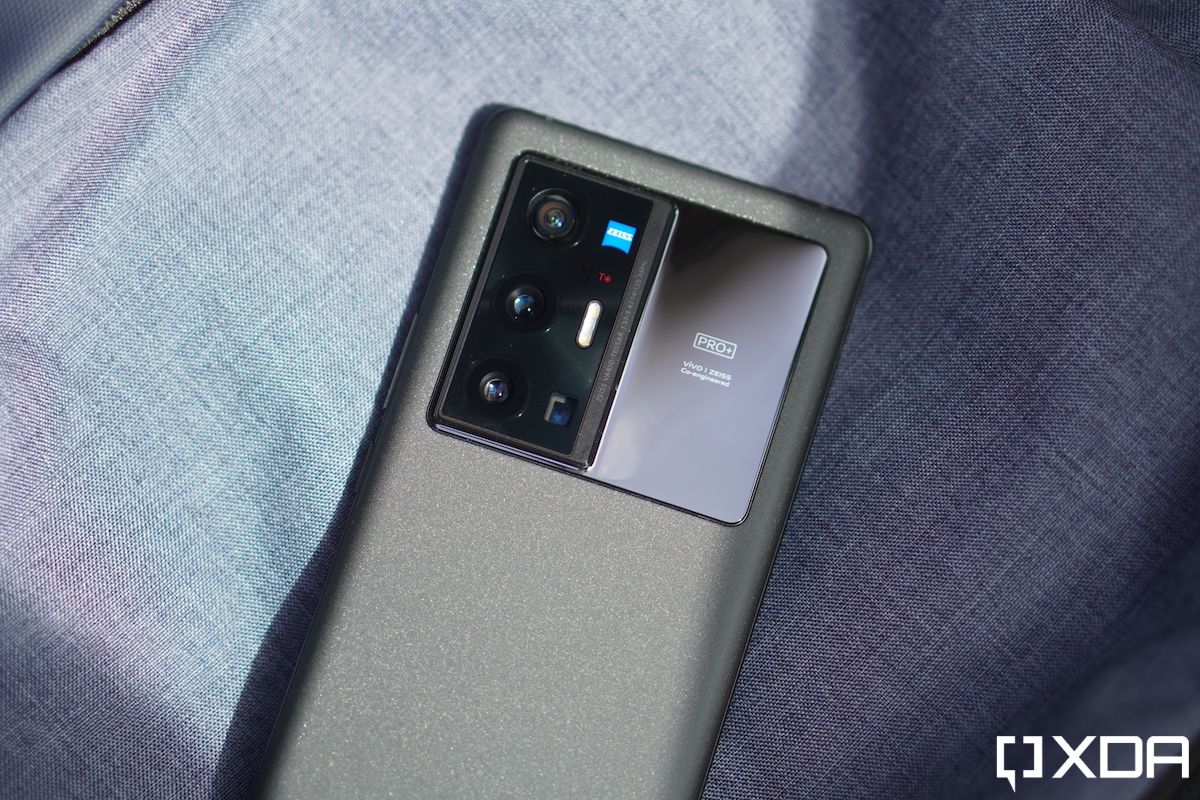
Vivo X70 Pro Plus
The Vivo X70 Pro Plus is a good looking flagship with a very capable main camera.
If you are looking solely at the camera, the Vivo X70 Pro Plus still retains the crown of the best camera smartphone even in 2022, resting on the prowess of its main camera and ultra-wide camera. But the second position is just a breath away, with the Samsung Galaxy S22 Ultra offering more polish in the experience and more practical versatility with its zoom. Vivo has its work cut out for the upcoming X80 series, and I can't wait to see how far they can push the envelope for this year.

